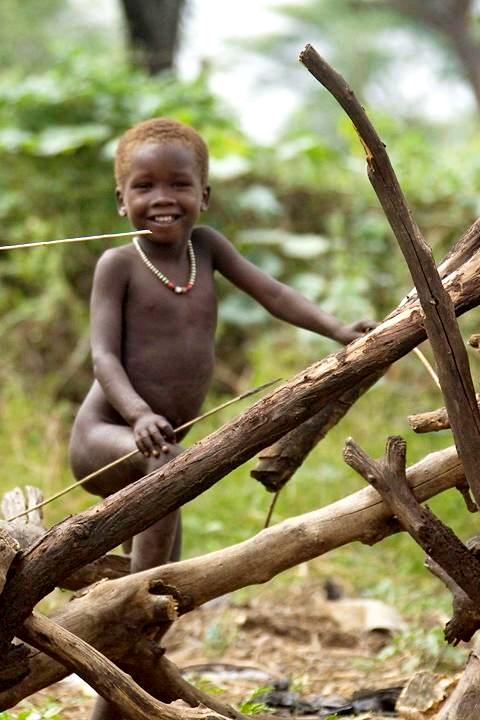
African Tribes: The Toposa

Figure 1.--This is a Toposa child from South Sudan. The Toposa are one of many traditional tribes which are now beginning to be affected by the outside world. Traditional practices like cattle raiding persist and cause problems with neighnoring tribes. They were also one of the tribes involved in the Second Sudanese Civil War.
|
|
The Toposa are one of the people of the South Sudan. They suffered during the Second Sudanrese Civil War (1983-2005) for independence and the Arab-dominated Sudan Government's brutal effort to supress the African people of the south. The Toposa role was complicated. The Toposa supported the Sudan People's Liberation Army (SPLA), but at timesassisted the the Sudanese Government. With independence some of the lingering bitternes with the Civil war as well as cattle raids on neigbors continue to be a problem. The Toposa numbers over 0.7 million people, although exact numbers do not exist. The Toposa object to census taking or even counging heads of cattle. They live in the Greater Kapoeta area located on the east bank Eastern Equatoria state. The most important urban centers are Kapoeta, Riwoto, Narus, Kauto, Naita, Mogos, Lamurnyang and Karukomuge. The terraine is rugged with hills and ridges separated low-lying plains and streams which appear during the rainy season. The area is arid with little vegetation other than shrubs and short grasses. It has been affected by Saharn desertification. Their envirnoment hs poeefully shaped the Toposa and their life style. They are a hearding people whose economy is based on cattle, camels, donkeys, goats and sheep. They have koilled elephants for the ivory trade. We are not sure to what extent they have stopped. There is a tradition of raids on the herds of neighboring tribes. They have a tradition of constant low-level warfare, usually cattle raids, against their neighbors.There are mineral resources, but they are not developed. The Toposa do pan for gold in stream beds. The Toposa are part of a larger tribal group known as the Ateker cluster, which in the immediate area of the Sudan include the Toposa, Nyangatom and Jiye. Other related people include the Turkana (Kenya) and the Jie, Dodoth and Karamojong (Uganda). Toposa legend relate how they came from the Losolia Mountains in Uganda but were forced to move by a terrible drought which killed many. Traditional Toposa culture is eroding ad modern ways become increasingly important and experience shared with tribal grouos throughout frica, but more ffecting the traditional tribes like the Toposa.
Toposa boys are organised as age-sets. Their fathers teach them how to herd their livestock. They begin with the smaller animalks (goats and sheep), but gradually learn to care for the more valuable animals and eventually the cattle. They then can travel substantial distances with the livestock looking for pasture and water. The girls on the other hand stay at home and learn house keeping skills fom their mothers.
HBC

Navigate the Boys' Historical Clothing Web Site:
[Introduction]
[Activities]
[Biographies]
[Chronology]
[Cloth and textiles]
[Clothing styles]
[Countries]
[Topics]
[Bibliographies]
[Contributions]
[FAQs]
[Glossaries]
[Images]
[Links]
[Registration]
[Tools]
[Boys' Clothing Home]
Navigate the Boys' Historical Clothing national pages:
[Return to the Main African tribal page]
[Return to the Main African page]
[Central African Republic]
[Chad]
[Congo]
[Djibouti]
[Egypt]
[Ethiopia ]
[Kenya]
[Libya ]
[Somalia]
[South Sudanl]
[Sudan]
[Uganda]
[Congo]
Created: 2:38 PM 1/25/2013
Last updated: 2:38 PM 1/25/2013



